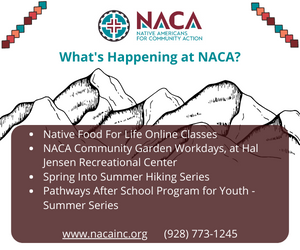Key elements include separated bike and pedestrian pathways and underpasses.
The changes include the redeveloped Lone Tree Overpass Corridor, with a bridge across the railroad (much like the one at Fourth Street), which will connect at Butler Ave. and extend to O’Leary St., with a generous separated bikeway and sidewalk on each side.
“On this section there’ll be a total width of 44 feet for cars and 27 feet for pedestrians and cyclists. But there’ll also be some improvements all the way south to Pine Canyon eventually,” said Bauman. The project is not cheap – the railroad overpass and corridor will cost $120 million, with construction starting in 2024.
Meanwhile, as part of the “Downtown Mile” project, the South Milton Road railroad underpass will be lowered, removing the low clearance bridge, with a new separated cycle and pedestrian way to be built above road level at a cost of $56 million.
The multi-way junction where Sitgreaves Street meets W. Sante Fe Ave. and Route 66 will be redesigned. There will also be pedestrian-cycle tunnels under the railroad from City Hall to the Downtown Connection Center hub for Mountain Line buses – as well at Tunnel Springs, to connect Florence Street in Plaza Viejo to Walnut Street in west downtown. These projects are expected to take four years, starting in summer 2025. On top of all that, there will be a reconfigured road junction at University Ave. and Milton Road involving a wide, well-lighted pedestrian-cycle tunnel under Milton Road to connect housing on the west side to NAU campus.
The city has based much of its traffic planning on results from the latest regional plan, recently completed by Metroplan Flagstaff (https://www.metroplanflg.org/plans-projects), the region’s transportation planning agency responsible for the greater Flagstaff region from Bellemont to Doney Park and south to Kachina village. It also uses a metric known as Level-of-Service (LOS) – which measures vehicle delay times at intersections under various traffic conditions and different times of day. Grade A is less than a 10-second delay, grade D involves a 35- to 55-second delay, while grade F means that traffic volume exceeds capacity, with significant queueing.
The work will be paid for from revenues generated by two voter initiatives passed in November 2017. Prop 420 calls for a sales tax dedicated to the Lone Tree Overpass Corridor project; the Prop 419 sales tax will pay for the other planned work. While the focus is on improving traffic flow, the new projects include significant pedestrian and bike infrastructure components. There will be inevitable disruptions to traffic during construction. “We don’t know how the contractors, who haven’t been hired yet, will do traffic control,” said Bauman. “But given the scope, it will be very disruptive at times.”
Some in the community are concerned about how money is being spent and the lack of a provision for a fully connect bike-pedestrian path network.
“I’m grateful for the improved focus on bike-pedestrian infrastructure needs, but I believe the city is overbuilding for the vehicle,” said former vice-mayor and current Flagstaff Biking Organization board member Adam Shimoni. “Building safe, attractive bike and pedestrian infrastructure and faster roads are not compatible goals. Instead, why don’t we design roads to encourage people to leave their car at home? It’s been demonstrated time and time again that if you build more high-capacity roads and intersections designed to cut down wait times and traffic, you then get ‘induced demand,’ resulting in more traffic and a return to congestion. Yet, over the years, the Flagstaff community has repeatedly said in surveys that they’re more than happy to wait an extra 15 to 30 seconds at major intersections if that means better pedestrian and cycle path provisions with improved safety.”
The surveys Shimoni is referring to are the Flagstaff Trip Diary Survey of Community Travel Patterns, carried out periodically by Metroplan Flagstaff since 2006. The third and most recent iteration of that study showed that the community is clearly very car dependent, with 77% of respondents saying the automobile is their primary mode of transportation. However, the results also show people are willing to make changes, with 62% expressing a willingness to switch transportation mode, for at least some of their trips, with bicycles (currently accounting for around 7% of trips) being the preferred shift. Walking trips, by comparison, currently account for 12% of all trips and public transit 4%.
What would encourage people to make a shift to different transportation modes? And how much of a change does Flagstaff need to make to achieve its stated 2030 sustainability goals? See “Flagstaff’s Transportation Future, Part Two” in the Flagstaff Business News October edition. FBN
By Diane Hope, FBN
Courtesy Photo: The South Milton Road railroad underpass in Flagstaff will be lowered. A new separated cycle and pedestrian pathway is to be built above road level.





